|
Curriculum Vitae
PhD Dissertation
Species Brief (PDF)
Early Belize Research
Join me in Belize!
Earthwatch Photo Gallery by Jeff Rees
Earthwatch Travelogue by Sam Gallagher
Belize City Tides
|

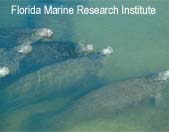

About This Page My goal in creating this page is multi-fold.
First, although I have provided a
basic introduction to the order Sirenia, I have refrained from duplicating the meticulous
descriptions which are already available online
(e.g. SeaWorld's Education Department Resource,
Florida Power & Light Company's
The West Indian Manatee in Florida, and the Great Barrier Reef Marine Park Authority's
Dugong Information Kit).
One word of caution, however... Scientists are rapidly uncovering new knowledge and many sources on the WEB have
outdated or erroneous information. Please watch this site for new information as it becomes available online.
In the meantime, this page is intended to fill in gaps to information available online, such as details on the saga of Steller's Sea
Cow and to organize links to pages of interest to younger students and the general public (e.g. Visit Mermaids!,
KIDS ONLY!, and You Can Help).
Second, I wanted a place to showcase my personal research
on the Ecology and Behavior of Antillean Manatees in the Drowned Cayes Area of Belize, Central America. At present this information is not up-to-date as
I am totally immersed in my dissertation. For an overview of the project, please visit my project site at
EARTHWATCH.
Third, I have provided links to other Sirenia research around the world and to ONLINE
documents and bibliographies of interest to manatee researchers. Browse the left and right columns of this page for
hundreds of links!
And finally, in an effort to financially
support these endeavors, I've provided links to books and other manatee merchandise. If you purchase any of the books through Sirenian International's Online
Bookstore, Amazon.com will donate 5% - 15% of the purchase price to Sirenian International, our 501(c)(3) organization dedicated
to the conservation of manatees and dugongs on a global scale.

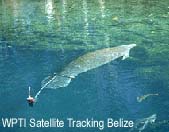
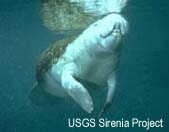 Taxonomy
Taxonomy
Manatees belong to the order
Sirenia
of which there are only 4 extant species in 2 families,
Trichechidae and
Dugongidae. The West Indian manatee
(Trichechus manatus),
the West African manatee
(Trichechus senegalensis),
and the Amazonian manatee
(Trichechus inunguis)
are members of the family Trichechidae. The dugong
(Dugong dugon)
is the only surviving member of the family Dugongidae (Reynolds and Odell 1991).
Steller's sea cow
(Hydrodamalis gigas)
is also in the family Dugongidae (Reynolds and Odell 1991),
but the species was extirpated by humans in 1768 just 27 years after it's discovery in the
North Pacific (Stejneger 1887).
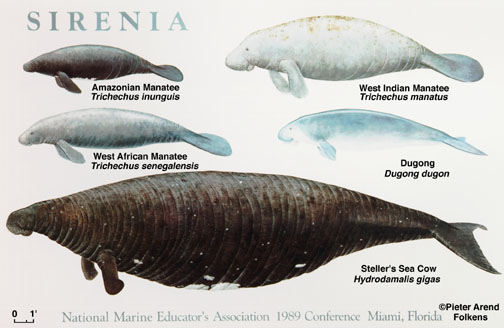
READ MORE ABOUT IT! To read more about the order
Sirenia: manatees and dugongs, their life histories, habitat use, distribution and abundance,
I recommend the following references:
- Reep, Roger L., and Robert K. Bonde. 2006
- The Florida Manatee Biology and Conservation. University Press of Florida. Hardcover 190 pp.
- Powell, James A. 2003.
- Manatees: Natural History & Conservation.
World Life Library, Voyageur Press. Softcover 72 pp.
- Ripple, Jeff, and Doug Perrine.
- Manatees & Dugongs of the World. Voyageur Press. Softcover 144 pp.
- Reynolds, John E., and Daniel K. Odell. 1991
- Manatees
and Dugongs. New York: Facts on File. Hardcover 192 pp.
- Hartman, Daniel S. 1979.
- Ecology and
Behavior of the Manatee (Trichechus manatus) in Florida. Special Publication
No. 5. The American Society of Mammalogists. Hardcover 153 pp.
Steller's Sea Cow
Hydrodamalis gigas, formerly classified as Rytina gigas, was first seen by
modern humans when Captain
Vitus Bering and his comrades discovered an uninhabited island (later named
Bering Island) in 1741. Bering
and his two ships, St. Peter and St. Paul, were on their way home to
Kamchatka following an expedition
to map the coast of Alaska for Tsar Peter I the Great of Russia. The ships were separated during a
storm and Captain
Bering, the St. Peter, and her crew were stranded on the island. Although Bering died on the island
during the winter of 1741, Georg Wilhelm Steller (a German-born naturalist), and about half of
the ship's crew survived. Steller described a giant sea cow and its habits, but was vague in his
accounts of abundance and distribution. He said he found it numerous and in herds, leaving
future researchers to guess at exactly how many. Stejneger (1887) estimated the number at
less than 1500 and hypothesized that they were the last survivors of a once more numerous
and widely distributed species which had been spared because man had not yet reached their
last resort.
Upon the survivors' return to Kamchatka in 1742, new hunting expeditions were formed almost
every year. They returned to Bering Island where they spent 8-9 months hunting fur-animals
and eating sea cow meat to survive. Indeed, many of the expeditions are reported to have
wintered on Bering Island for the express purpose of collecting sea cow meat for the
remainder of their 3-4 year journey to the Aleutian Islands and America. The last sea cow
was reported killed in 1768, just 27 years after the island had been discovered by modern man.
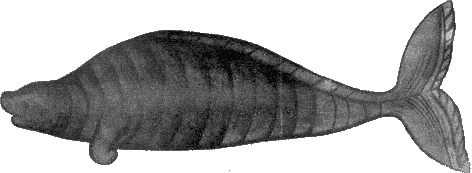
a sketch of Steller's sea cow from the journal of Sven Waxell,
"Kamchatka Expedition 1741-1742"
source: The American Expedition by Sven Waxell 1952
(other sketches)
From Steller's description, these huge herbivores are believed to have numbered around 1500-2000 in the Bering
Island and Copper Island areas of the North Pacific (circa 1741). The largest animals were 4-5 fathoms long (1 fathom = 6 feet),
3.5 fathoms thick around, and weighed 200 puds or 80 short hundredweight (up to about 8,000 pounds). They had no teeth, but
two flat white bones, the one above fixed to the palate, and the one below on the inside of the lower jaw. Both were furrowed and
had raised ridges with which they masticated kelp. The sea cows were found in herds close to shore. They drifted just below
the surface of the water, a single animal resembled an overturned boat. Steller and Waxell both noted large midsections and very
small heads. To see a photograph of the skeleton of a Steller's sea cow in the Helsinki Museum, go to
Ari Lampinen, University of Jyvaskyla, Finland. The text is in Finnish,
but the photo is worth the trip!
 This overlay image created by Hans Rothauscher, author of
The Dugong Page, demonstrates the extremely small
skull of Steller's sea cow (grey) in comparison with the modern dugong (red).
NOTE: The images represent proportions, NOT relative size; Steller's sea cow was at least twice as large as the modern
dugong.
This overlay image created by Hans Rothauscher, author of
The Dugong Page, demonstrates the extremely small
skull of Steller's sea cow (grey) in comparison with the modern dugong (red).
NOTE: The images represent proportions, NOT relative size; Steller's sea cow was at least twice as large as the modern
dugong. The ancestor to Steller's Sea Cow was possibly an extinct Dugongidae sea cow,
Dusisiren jordani, previously named
Metaxytherium jordani. Dusisiren was common in the shallow coastal waters of late
Miocene California 10-12 million years ago.
Sirenian evolution is not fully understood, but scientists believe the order originated near Africa in the middle
Eocene, 45-50 MYBP
(Perry 1995; also see Domning, D. P., 1978,
Sirenian Evolution in the North Pacific Ocean, University of California Press). Click to learn more about the
Eocene and Geological Time.
READ MORE ABOUT IT!
To read more about the Kamchatka Expedition and the discovery and extirpation of Steller's sea cow, I recommend the
following references:
- Stejneger, Leonhard. 1887.
- How the great northern sea-cow (Rytina) became exterminated. The American Naturalist 21(12):1047-1054.
- Steller, Georg Wilhelm. 1988.
- Journal of a Voyage with Bering 1741-1742.
Stanford University Press. Stanford, California. 252 pp.
- Waxell, Sven. 1952.
- The American Expedition. William Hodge and Company, Limited. London. 236 pp.
Meet Kevin Andrewin, who helped me
record manatees in Southern Lagoon, Gales Point Manatee, Belize.
|
Visit Mermaids
- SFM Bradenton FL
- Nature Coast
- Xcaret, Mexico
- Kayak Tours, Florida
- Moreton Bay, Australia
- Brazil
- Hervey Bay, Australia
- Amsterdam, NL
- Arnhem, NL
- Beauval, FR?
- Berlin, DE
- Nurnberg, DE
- Odense, DK
- WEB CAM!
- Crystal River
- Spanish Bay Resort
- Ambergris Caye
- Gales Point
- Belize City
- Manatee Lagoon
- Mote Marine Lab
- Lee County
- Cincinati Zoo
- Columbus Zoo
- Matlacha
- Fort Myers
- Apollo Beach
- Homosassa Springs
- Lowry Park
- Blue Spring
- Manatee Springs
- Miami Seaquarium
- SeaWorld, FL & CA
- Florida Map
|
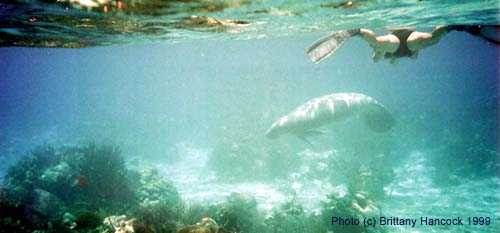
![]() TEACHERS! Bring your classroom to Belize via Virtual Explorers! Click on the VE icon to the left.
TEACHERS! Bring your classroom to Belize via Virtual Explorers! Click on the VE icon to the left.











